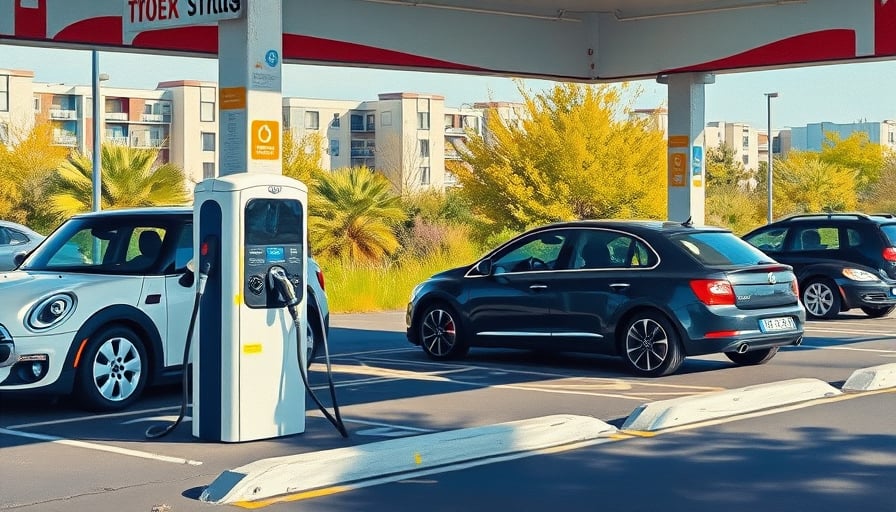Stellantis NV Advances Strategic Positioning Across Multiple Verticals
Alignment of the Electric‑Vehicle Supply Chain with the NACS Standard
Stellantis NV has announced a decisive shift in its electric‑vehicle (EV) supply chain strategy. The company will adopt the North American Charging Standard (NACS) for its Jeep and Dodge models in key markets, specifically North America, Japan, and South Korea. This decision enables the vehicles to connect seamlessly to Tesla’s Supercharger network, thereby extending charging infrastructure accessibility to Stellantis customers without the need for additional adapters or dual‑connector solutions.
The adoption of NACS reflects a broader industry convergence toward a single charging interface. Major automakers such as Ford, General Motors, and Hyundai have also committed to the standard in recent months, underscoring its growing dominance as a de‑facto global charging protocol. By aligning its vehicles with NACS, Stellantis enhances the perceived value proposition of its EVs, potentially accelerating adoption rates among consumers who rely on Tesla’s extensive network.
Expanding Leapmotor Presence in Europe
While Stellantis pursues the NACS transition, its partner Leapmotor is simultaneously expanding in Europe. The Chinese EV manufacturer has reported a surge in shipments to Germany, where it has overtaken BYD as the country’s largest EV seller. Stellantis dealerships are now offering new Leapmotor models, including a compact city‑car, which has contributed to the company’s increased market penetration.
This collaboration illustrates a strategic cross‑border partnership model. By leveraging Stellantis’s distribution network, Leapmotor gains rapid access to European markets, while Stellantis benefits from a diversified product portfolio that can attract cost‑conscious and environmentally conscious consumers. The partnership also reflects a broader trend of European OEMs engaging with Chinese suppliers to diversify supply chains and access emerging technologies.
Supplier Debt Restructuring and Financial Prudence
Stellantis is actively negotiating with its suppliers to address debt exposure. A notable development involves CLN‑Coils Lamiere Nastri, a key component supplier. The company is close to reaching an agreement with its lenders that may involve asset sales and a reduction in creditor exposure. Such measures are indicative of Stellantis’s broader commitment to supply‑chain resilience, ensuring that component availability is not jeopardized by financial instability.
By proactively managing supplier debt, Stellantis reduces the risk of production disruptions and maintains tighter control over component costs. This approach is consistent with industry best practices, where OEMs engage in structured financial partnerships with suppliers to mitigate systemic risks.
Hybrid Launch at Mirafiori and Production Target Implications
The Mirafiori plant in Italy is preparing to introduce a new hybrid version of the Fiat 500. The hybrid model is anticipated to play a pivotal role in meeting Stellantis’s annual production target and reinforcing the brand’s commitment to electrification. The decision to launch the hybrid at Mirafiori aligns with the plant’s existing manufacturing capabilities and the company’s strategic focus on consolidating production across key European facilities.
Hybrid vehicles represent a bridge technology that enables automakers to comply with stringent emission regulations while maintaining consumer flexibility. By adding a hybrid variant to its lineup, Stellantis positions itself to capture a segment of the market that values both fuel efficiency and low emissions without the higher upfront costs associated with full battery EVs.
Regulatory Scrutiny and Congressional Engagement
Stellantis has recently been summoned before the U.S. Congress, marking the first such appearance in more than ten years. This development highlights the sustained scrutiny that major automakers face from lawmakers regarding environmental policies, supply‑chain practices, and consumer protections. The company’s leadership is expected to address questions related to its EV strategy, supply‑chain resilience, and compliance with federal regulations.
The congressional hearing underscores the intersection of corporate strategy and public policy. Stellantis’s engagement with regulators can influence future legislative priorities, especially those related to EV infrastructure, battery manufacturing, and import tariffs.
In summary, Stellantis’s multi‑faceted strategy—spanning charging standard adoption, European partnership expansion, supplier financial restructuring, hybrid product launches, and regulatory engagement—demonstrates an integrated approach to navigating the evolving automotive landscape. By aligning its operations with industry trends and maintaining robust supply‑chain governance, Stellantis aims to secure a competitive advantage in a market increasingly defined by electrification, connectivity, and regulatory oversight.




